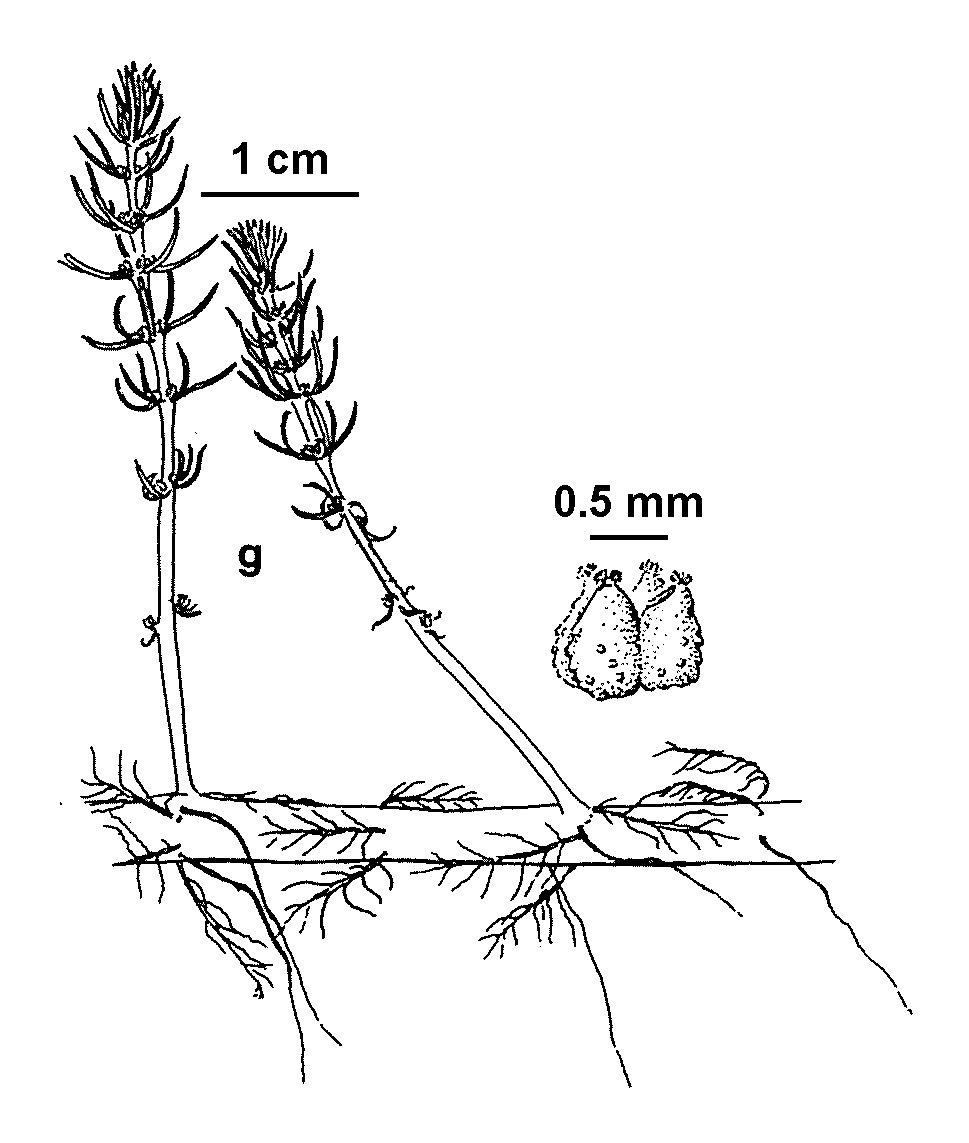Myriophyllum simulans
Orchard Amphibious Water-milfoilPerennial aquatic or marsh herb; stems 5–40 cm tall, mostly 1–2 mm diam., rooting at nodes. Leaves dimorphic; submerged leaves in whorls of 4 or 5, orbicular, mostly 18–25 mm long, crowded, pectinate, with 22–27 pinnae; emergent leaves in whorls of 3 or 4, some irregularly arranged, linear to terete, mostly 5–15 mm long, margins entire; in terrestrial plants all leaves intermediate between submerged and emergent types. Bracteoles of male flowers ovate, 0.8–1.2 mm long, entire or erose; bracteoles of female flowers smaller; flowers solitary, sessile. Male flowers: sepals 4, linear to lanceolate, 0.9–1.1 mm long; petals 4, 2.8–3 mm long, reddish, caducous; stamens 8. Female flowers: sepals and petals absent; ovary 4-celled, styles elongate, becoming reflexed, stigmas red or pink, fading to white, fimbriate. Fruit more or less cubic, deep reddish-purple; mericarps ovoid, c. 0.8 mm long, obliquely truncate, aculeate-tuberculate. Flowers Sep.–Mar.
LoM, MuM, Wim, GleP, Brid, VVP, VRiv, MuF, GipP, OtP, WaP, Gold, CVU, GGr, DunT, NIS, EGL, EGU, WPro, HSF, HNF, VAlp. Also SA, Qld, NSW, Tas. Found throughout much of southern Victoria where it grows in still water or, more often, fully emergent on mud.
Very polymorphic and only reliably distinguished from closely related taxa when flowers and fruit are present. See also notes under Myriophyllum variifolium.
Jeanes, J.A. (1996). Haloragaceae. In: Walsh, N.G.; Entwisle, T.J., Flora of Victoria Vol. 3, Dicotyledons Winteraceae to Myrtaceae, pp. 887–908. Inkata Press, Melbourne.
 Spinning
Spinning



